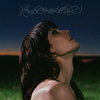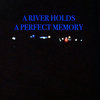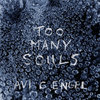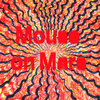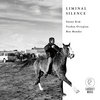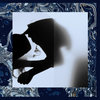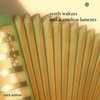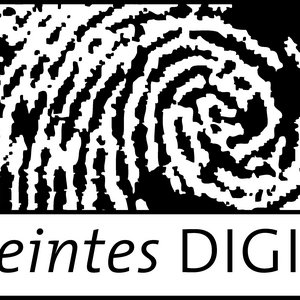Lieu-temps by John Young
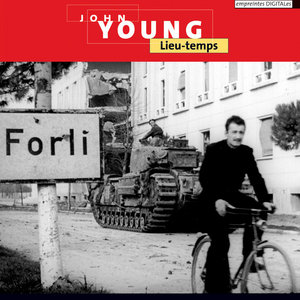
[EN]
Of Place and Time
In 2002 I made my first visit to the city of Forlì in northern Italy. It was a moving occasion for me as it was the place where my mother was born and where, as a young woman, she got to know my father who was at that time a soldier in the New Zealand Division of the 8th Army. That was in 1944. My mother followed my father back to New Zealand after the war, where I grew up with many powerful impressions of the places and events of their wartime experiences. But, as vivid and as frequently emotive as my parents’ reminiscences were, 58 years later they all took on a new reality for me on that first visit to Forlì.
In the company of my father (his first time there since 1945), I was astonished by his very precise recollections of buildings, streets and directions around the city. I was also reminded of my mother’s first return to Forlì after 35 years, where she was spontaneously greeted in the street by an old acquaintance who exclaimed ‘I’ve not seen you for such a long time!’
Some things were more poignant for their absence. The farmhouse at Malmissole in the outskirts of Forlì, where my parents first actually met, has gone. The house on via Giorgio Regnoli in Forlì where my mother and her parents had lived after the city’s liberation received a direct hit from a German shell and now a notably more modern house stands in its place. But amidst these and many other reminders, the Forlì soundscape triggered another response. Standing in the centre of the city’s Piazza Aurelio Saffi listening to bells from churches clearly audible over great distances gave me a strong sense of experiencing the sounds as something resonant of the place and its history… that these were ‘voices’ from the past — something permanent, yet alive — evoking a sense of being touched by the physicality of sounds that others had experienced with the same immediacy over many years and through some dark, violent times. Of course, the emotional nature of that visit made me especially receptive to such an idea.
But in response to a flood of expressions of place and identity, and my own inexorable feeling of being at once earthed and estranged in Forlì, these works explore the interaction of memory and experience, narrative and evocation bringing sounds and voices from the past and the present together in imaginary soundscapes.
– John Young, Leicester (England, UK) [x-07]
[FR]
Lieu-temps
Je visitai la ville de Forlì, dans le nord de l’Italie, pour la première fois en 2002. Moment émouvant s’il en est un, puisqu’il s’agit du lieu où ma mère naquit et où, encore jeune fille, elle rencontra mon père, à l’époque où il était soldat dans la division néo-zélandaise de la 8e armée. C’était en 1944. Après la guerre, ma mère accompagna mon père en Nouvelle-Zélande, où je grandis parmi de puissantes évocations des lieux et des événements qui marquèrent leurs expériences de guerre. Pourtant, malgré toute la vivacité et l’émotivité contenue dans les histoires de mes parents, le tout prit pour moi une réalité nouvelle 58 ans plus tard, lors de ce premier séjour à Forlì.
Mon père m’y accompagnait; c’était la première fois qu’il y mettait les pieds depuis 1945. Je fus subjugué par la précision de ses souvenirs des édifices, des rues et de la disposition de la ville. Cela me rappela que ma mère, à son premier retour à Forlì 35 ans après la guerre, avait été spontanément accueillie en pleine rue par une vieille connaissance qui s’est écriée: «Cela fait une éternité que je ne t’ai pas vu!»
Plus poignantes étaient les choses qui brillaient par leur absence. La ferme de Malmissole, près de Forlì, où mes parents s’étaient rencontrés, n’est plus. La maison à Forlì, rue Giorgio Regnoli, où ont habité ma mère et ses parents après la libération de la ville, fut bombardée par les Allemands; une demeure beaucoup plus moderne se tient maintenant à cet endroit. Cependant, au milieu de ces souvenirs et de bien d’autres encore, le paysage sonore de Forlì provoqua une autre réaction. Debout au centre de la Piazza Aurelio Saffi, j’écoutai les cloches de diverses églises, que l’on entend clairement de très loin, et je ressentis une forte impression; je perçus dans ces sons la résonance des lieux et de leur histoire; j’y vis des «voix» du passé, quelque chose de permanent, mais de bien vivant, qui donne l’impression d’être touché par la dimension physique des sons que d’autres ont entendus avec la même immédiateté, pendant plusieurs années et à travers des périodes difficiles, voire violentes. Évidemment, les raisons personnelles de ma visite me rendaient particulièrement réceptif à une telle idée.
En réponse au déluge d’expressions des lieux et d’identité, ainsi qu’à mon propre sentiment inexorable d’appartenir à Forlì tout en y étant étranger, ces œuvres explorent l’interaction existant entre mémoire et expérience, entre narration et évocation, en rapprochant sons et voix du passé et du présent pour former des paysages sonores imaginaires.
– John Young, Leicester (Angleterre, RU) [traduction française: François Couture, x-07]
Tracklist
| 1. | Giosuè Carducci, John Young - Ricordiamo Forlì | 53:31 |
| 2. | E E Cummings, Stroma, John Young - Arrivederci | 15:35 |
Credits
empreintes DIGITALes 2007
Image: Imperial War Museum, London (England, UK) / Imperial War Museum, Londres (Angleterre, RU)
IMED 0787_NUM
